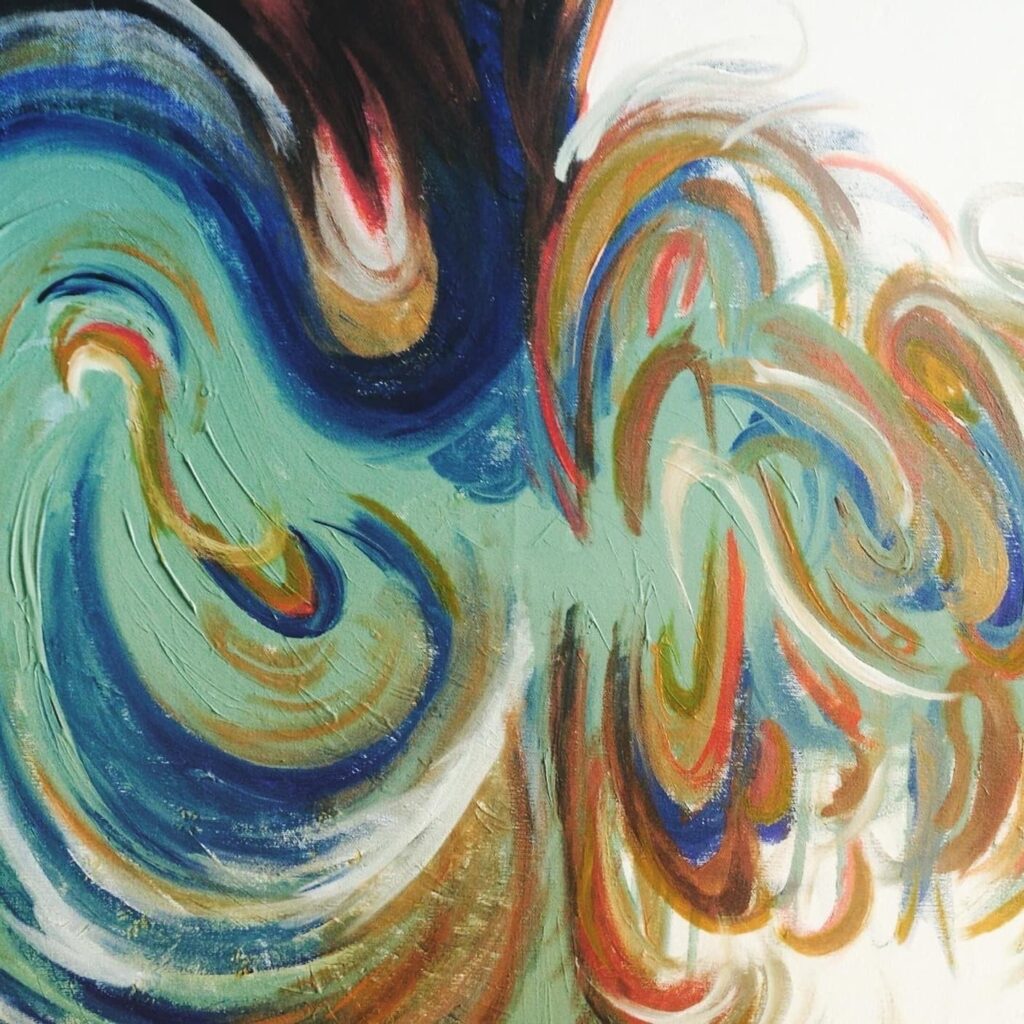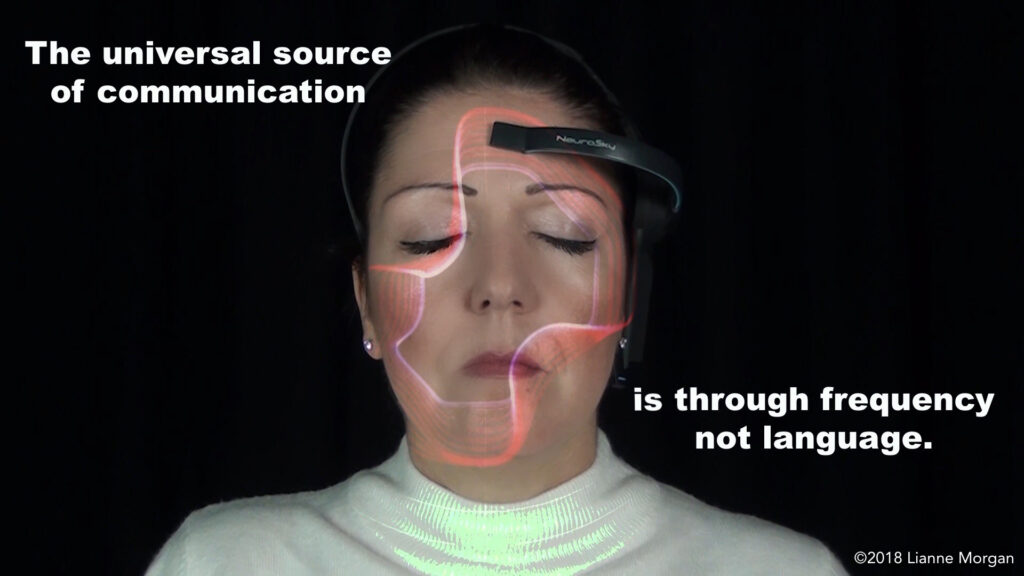When I began my journey into the world of Art I thought I had left music behind. I remember speaking with a fellow Artist and saying “I wanted nothing more to do with the Music Industry and I am only going to focus on visual work” he laughed out loud and just said, “We will see.” I recently looked back into my development journal from my art processes and it was so clear that Music and Sound was swimming around everything that I was creating. I brought out a painting that I created 8 years ago called Colours in Motion, I didn’t realize at the time I was painting Sound. I am excited that I now have a better understanding of my work and after many years of focus and study, I have a very clear knowledge of the inspiration held within my art.

At a recent Sound Art Lecture, I began to feel rather old. The lecturer was explaining about how Music and Sound have developed, and the historical journey it has taken. He talked about Édouard-Léon Scott de Martinville who invented the phonautograph in 1857 and the development of sound recording devices up to today with MPS and WAV files, at this point, I felt very old because I could remember setting up my studio with an Atari and Tascam reel to reel. I can remember when records moved to CD, to DAT then to mini-disk then finally to audio files such as MP3 and WAVs. I can also remember when a group of my friends started building computers in the late 80s. I could go on and on, but you get the idea. I was starting to think I knew it all and I was past it, he then showed us a YouTube video of John Cage talking about Silence: which stirred my interest but agitated my relationship with conceptual art. There is something very clear about John Cage, and his passion for the simplification of sound, he glints his eye when he speaks of sound. Finally, I realized I do not love music, I love Sound, everything to do with Sound, the formation sound makes, the organized chaos of sound, and even the sound of silence, but I will argue that there is no silence, its only silent to the Human ear.
Over the last few weeks, I have dipped in and out of interest in Sound Art. I have found some of the aspects that I have been introduced to, hard to grasp the concept, one being Music Concrete, but after doing more research I see this was the prototype and the beginning of sampling and EDM. Max Mathews who was part of the Music Concrete Movement introduced taped music which transformed music from being ephemeral to being permanent. Pierre Schaeffer the founder of Music Concrete led the way for the sampler to be invented with his digital signal processing compositions. It was in the 1940s that his work began, but it was not until 1979 when the Quasar M8 sampler was introduced that the musicians embraced and flourished using music sampling.
Whilst trying to identify myself within the world of art, it was important to find examples that could inform me of how my work would be most suitably described. I began an exploration into sound artists and came across Steve Reich, known as a composer and most well-known for his discovery of phasing. Phasing is when two identical melodic patterns gradually fade out of sync. I found his compositions to be very complex and questioned whether he would be more suitably described as a sound artist and not a composer. My thinking was challenged as to how someone is identified as a sound artist, composer and musician. Considering his creative thinking and working out of the parameters of the musician’s rules and knowing his way of creatively working, processing, and exploring was how he brought the awareness of phasing into the Western world, to me this makes him a sound artist. To listen to Steve Reich’s Piano Phase visit here. After discovering this work I listened to Daniel Variations 2006, Pendulum Music 1968, and Drumming 1971 with a new understanding and a newfound knowledge, I could appreciate his skill but still the music pieces are far from beautiful, although I now know that is not a sound artist objective.
Looking into the coding of music has been an interesting discovery, of all the variations of musical scales from other traditions and parts of the world, It does appear that it is very much a Western approach that we demand order within music as well as socially. I came across Karl Hein Stockhausen and Luciano Berio they were working with just twelve notes, they would invert them, and overlap them but kept only to the twelve notes. In a way, they were trying to create their code. The Twelve Notes led me to listen to Arvo Part- Cantus in memory of Benjamin Britton, this piece consists of minor chords descending and overlapping, creating the phasing that was introduced by Steve Reich.
I work regularly with Cubase, another code regarding music technology that is visual, it is laid out more like a graph and is marked out as straight lines taking notes across the timeline. You can also view the sound wave manipulate it and affect it as you like. All these codes that are developed are only an interface in which we are invited to interact with one another using the same language. I have in the past become very frustrated with classically trained musicians that I have worked with when I have played a chord and they have told me that it doesn’t exist when it does because I have just played it. I have an understanding of why we need order and codes within music but it also creates barriers against creativity.
In my Art practice, I continue to explore other Sound Artists, and concerning this topic of Sound Art I would like to introduce to you, Christine Kubish – Electrical Walks on sounds emitted from Electro Magnetic Waves within the environment, Christine Sunkim, whose work is based on the exploration of Sound, https://youtu.be/mqJA0SZm9zI , and Lisa Park who uses brain frequency to manipulate singing bowls.
I created a Sound Installation piece in 2018 called Sound Mind using a similar process to Lisa Parks where I used a Brain-Computer Interface to transpose my brain wave activity into music.
